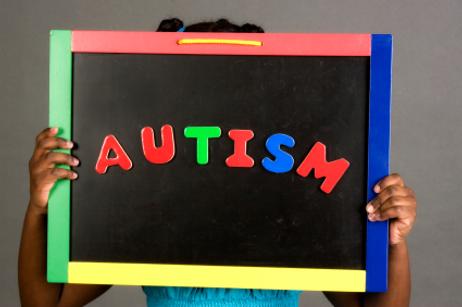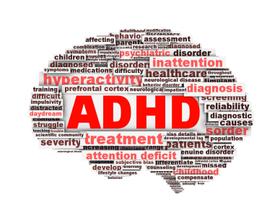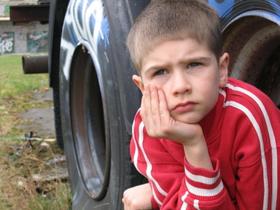According to research and studies from the Centers for Disease Control, an average of 1 in 150 births results in a child who is diagnosed with autism. With this statistic, it is predicted that over 1.5 million Americans alone are potentially dealing with some form of disorder on the autism spectrum. While the cause is still unknown, autism is growing at a rate of an estimated 10-17 percent each year, as this disorder is now more prevalent and common than diabetes, pediatric cancer, and AIDS combined.
As Autism Spectrum Therapies explains, ŌĆ£Autism is a complex developmental disability [ŌĆ”] (and) is considered a neurological disorder, though the specific cause is not known.ŌĆØ Today, medical experts and researchers can typically diagnose autism by a childŌĆÖs second birthday; however, new breakthroughs are providing signs of autism in infants as early as just six months of age. As these medical breakthroughs continually advance, schools, parents, and the medical community are discovering new avenues for providing autistic children with full and inclusive support.
Public Schools and Encouraging Social Behavior
Since autism spectrum disorder is a neurological issue, each individual coping with autism expresses unique and different symptoms and indications. This condition is referred to as a ŌĆ£spectrumŌĆØ because the degree and severity of each individual is subjectively specific. Most commonly, however, individuals suffering from autism spectrum disorder struggle with social and communicative skills, which are often most obviously realized once a child is exposed to social opportunities at school.
As Autism Spectrum Therapies explains,
ŌĆ£Social interaction and communication skills are the areas most affected by this disorder. Children and adults with autism typically have difficulties in verbal and non-verbal communication, social interactions, and leisure or play activities.ŌĆØ
Once a child with autism is exposed to the larger social community and interaction opportunities of a school setting, a child will often express unexpected reactions and behaviors.
Essentially, as Autism Therapies further explains,
ŌĆ£The communication and social differences are vast, and the current diagnostic categories a painfully inadequate in describing the symptoms and needs of the individual on the spectrum.ŌĆØ
Support in Public Schools for Children with Autism Spectrum Disorder
As one of the leading organizations dedicated to the study and research of autism, the Autism Spectrum Therapies (AST) group asserts that the best support for children dealing with autism spectrum disorder is gained when a child receives immediate care, early support, and intervention at a young age.
As the group reveals,
ŌĆ£Along with many researchers and clinicians around the country, the professionals at AST believe that all empirically-validated intervention approaches must be considered when developing a program for a child with autism. Often, a combination of highly structured teaching environments and goal oriented play-based teaching environments are found to be most effective.ŌĆØ
Essentially, as researchers are discovering the vast and diverse symptoms and behaviors of autism, public schools and programs are striving to create new and innovative autism systems for individualized support.
To seek out support, many schools are taking advantage of privately-based resources. For example, Lyntha Core, creator of the Parents and Teachers Hand in Hand (PATH) program, has designed her organization to teach both parents and teachers the positive ways and practices for assisting children struggling with autism spectrum disorder. Designed specifically for preschool-aged children, this private program focuses on various in-class practices that can be modified for both public school and home settings. For example, the PATH program incorporates various strategies to foster support: "Each aspect of the program represents a continuum of services and environment from the most restrictive to transition to a regular education classroom.ŌĆØ This program teaches parents and teachers concepts on how to improve a childŌĆÖs verbal behaviors, how to understand and adjust an environment to assist a child, and incorporating positive reinforcement strategies to improve reading and cognition skills.
Public School Highlights and Autism Spectrum Services
Custer Elementary
Similar to CoreŌĆÖs PATH program, public schools, and experts are becoming increasingly aware of the early-intervention benefits for assisting children with autism. To provide students with early and inclusive support, Custer Elementary, a public school in Washington, has implemented a program specifically designed to support children who are diagnosed on the spectrum of autism.
As Custer ElementaryŌĆÖs LPN, Penny Kelly, explains, ŌĆ£Right now there is no cure for an ASD and no one treatment approach is right for every person. However, there are many ways to help people with ASD. Experts agree that the earlier a child is identified, the better.ŌĆØ
To provide children with early support, Kelly asserts that schools and programs must engage in a structured pattern of reinforcing positive behaviors with positive encouragement and communication. As Kelly further explains, ŌĆ£The best programs teach children communication and social skills using simple steps and lots of positive reinforcement, and get parents involved [ŌĆ”] The sooner we stop letting the word ŌĆśautismŌĆÖ scare us and educate ourselves about the signs of an autism spectrum disorder, the sooner we can make a difference.ŌĆØ
New York City Public Schools
Similar to Custer Elementary, public schools across the country are embracing new and innovative programs to provide children with early support. Supporting this concept, New York CityŌĆÖs public schools have now designed ŌĆ£a school program exclusively for students with autism and pervasive developmental disabilities located in five general education schools (two elementary schools, two junior high schools, and one high school).ŌĆØ These public schools and their support programs are intended to provide ŌĆ£education services to approximately 415 students in 67 classes, is eclectic in its instructional approaches. This school uses research-based instructional approaches supported by ongoing data collection to monitor student progress. The program is being highlighted for the manner in which it has systematized its program, its positive climate, its focus on the learning standards and curriculum, use of technology, and levels of support for students and staff.ŌĆØ
With more research, parents and public schools can give young children with autism the needed support to succeed academically and socially. Early intervention is the key to helping any child adjust to the rigors of public school and social interaction.
Questions? Contact us on Facebook. @publicschoolreview













